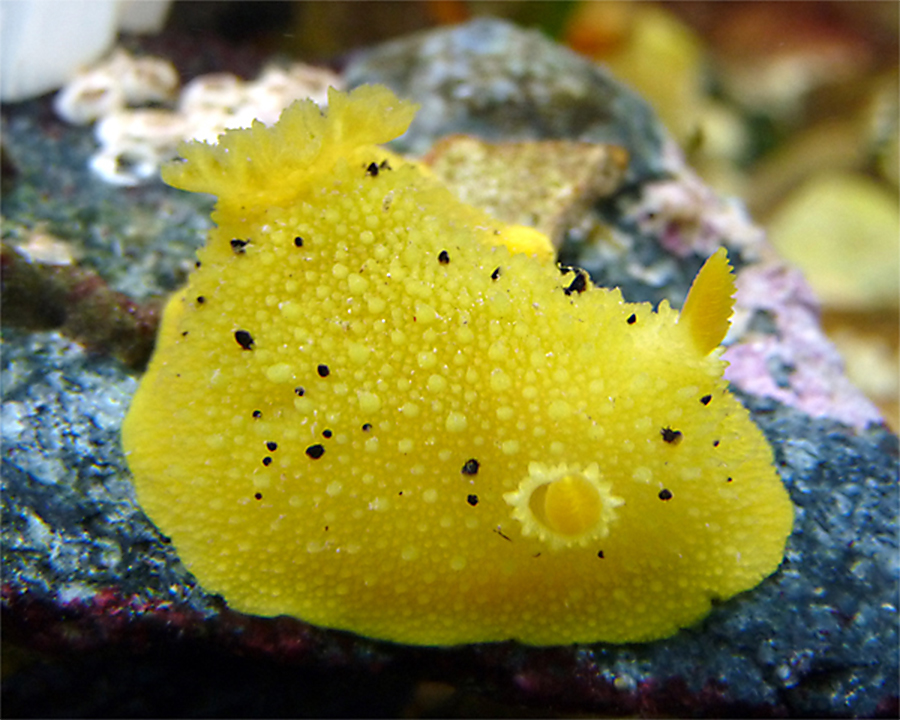Author: Anna Stürgkh
Common names: Monterey Sea Lemon, Sea Lemon
Scientific name: Doris montereyensis (Archidoris montereyensis)
Size range: 4.4 cm (1.7 inches) to 15 cm (6 inches) in length and 4 to 5 cm in width.
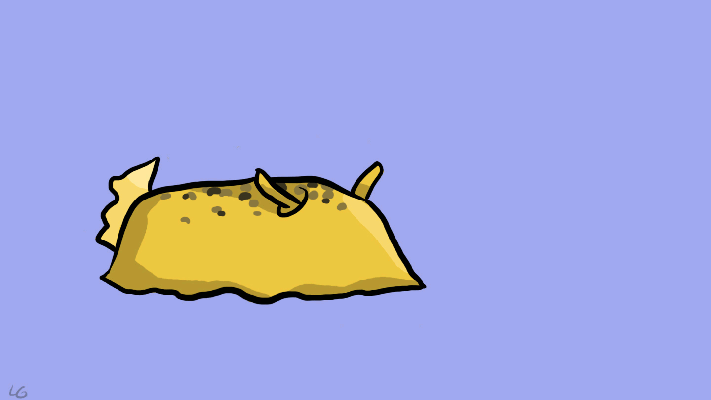
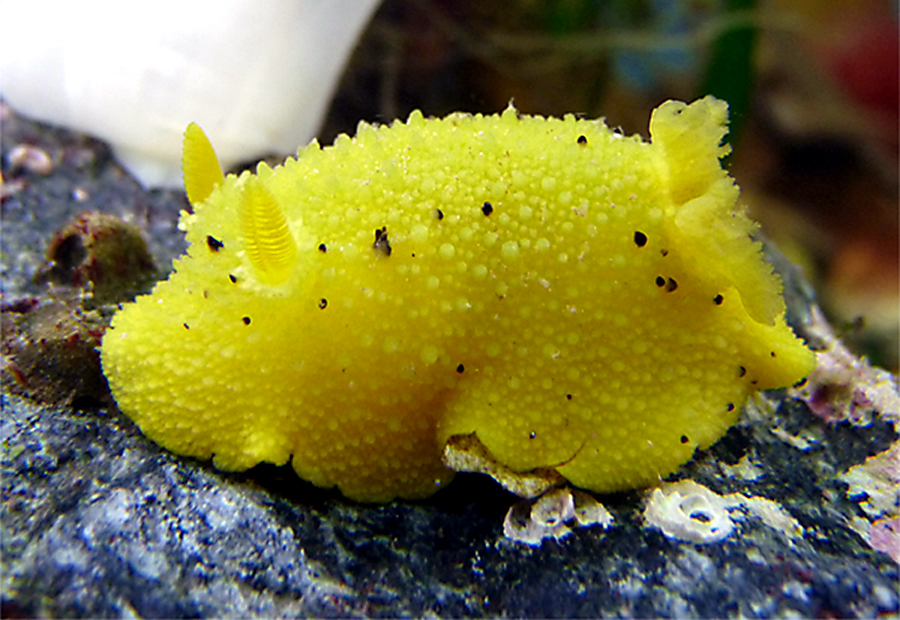
Identifying Features: The Monterey Sea Lemon (Doris montereyensis) is a distinct looking nudibranch with its bright yellow colour however it is easy to confuse with the Pacific Sea Lemon – also called the Noble Sea Lemon – (Peltodoris nobilis). Both have a similar shape, are bright yellow, have distinct tubercles (bumps) on their dorsal side, have feathery gill plumes, and may have a varied pattern of dark spots on their dorsal surface. There are a number of features that can be used to tell them apart. D. montereyensis is often described as having a “dingy” colour and is the one that has dark spots on the tips of the tubercles. P. nobilis in contrast is described as having a “clean” colour. It generally has a white gill plume, particularly on the outer edge of the plume, and the dark spots if present are only found between the tubercles.
Habitat: The Monterey Sea Lemon is commonly found on the west coast of North America. Its habitat reaches from southern Alaska to southern California. It can be found intertidally and can live in depths of up to 256m. This nudibranch prefers shaded and rocky regions. It is often found in areas with bread crumb sponges.

Animation by Lia Glidden
Food: The Monterey Sea Lemon preys only on sponges, particularly Halichondria panicea, which is commonly known as the bread crumb sponge or the yellow-green encrusting sponge. These sponges provide the sea lemon with its yellow colour (it is not surprising that the similarly coloured P. nobilis also feeds on the bread crumb sponge). The nudibranch uses its rasping tongue lined with rows of teeth (radula) to scrape small pieces off the sponges.
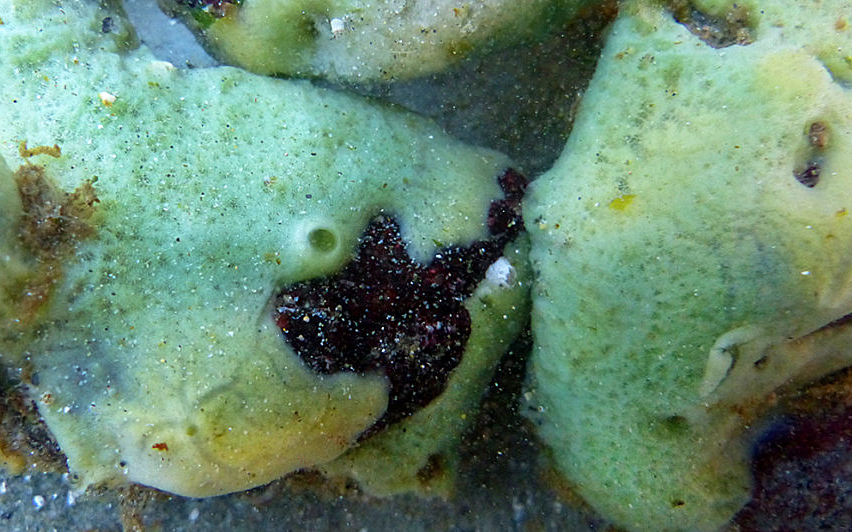
The main food of the Monterey Sea Lemon is the bread crumb sponge Halichondria panicea



Predators: Similar to other nudibranchs the bright yellow colour suggests that the Monterey Sea Lemon has chemical defenses and is a warning to predators that they should be avoided. The predation on this species is not well known. In captivity in our school aquarium a Pacific Spiny Lumpsucker took a bite out of the Monterey Sea Lemon but promptly spat it out.
Life Cycle: The Monterey Sea Lemon is a hermaphrodite, able to produce both sperm and eggs, and will transfer the sperm to another sea lemon during copulation. Eggs can be laid throughout the year. Several eggs are laid in each capsule and the capsules come together to form a long spiral white to yellow ribbon which is attached to a rock on one edge. The masses have up to 2 million eggs but only about 1% will survive. As the eggs are laid, the sperm that are stored in a “seminal receptacle” become agile and fertilize the eggs. After the egg is fertilized it develops into a veliger larvae that has two ciliated velar lobes that it uses to move with. The veligers then hatch to begin their pelagic life filter-feeding on diatoms and other single-celled algae before settling on the ocean floor and losing their shell. They have a life span of only around a year.
Our veliger video is featured in the True Facts episode “Freaky Nudibranchs” at 2:24.
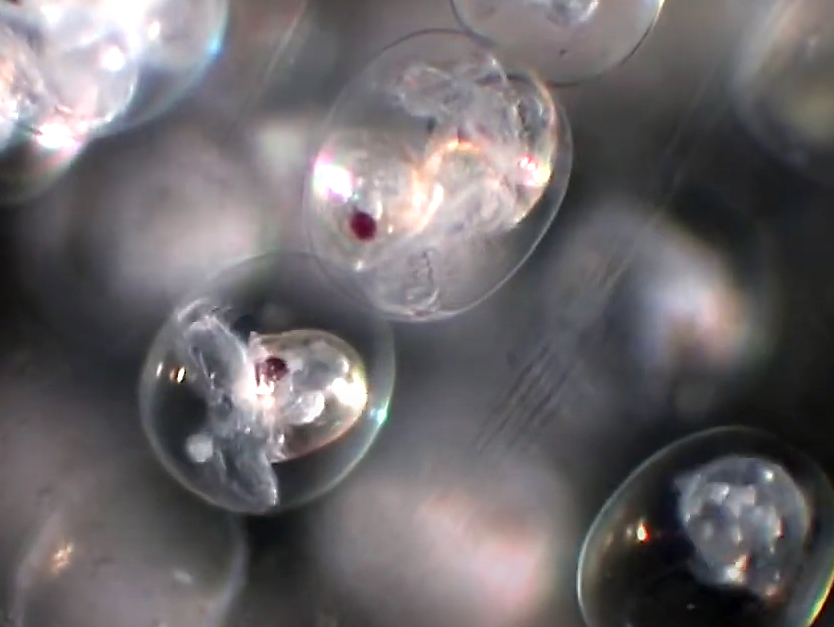
Veliger larvae of the Monterey Sea Lemon (Doris montereyensis)
Photographs by Anna Stürgkh, Erin Pringle and D. Young
Animation (GIF) by Lea Glidden
Monterey Sea Lemon Video: edited by Daemon Dollmont, footage by Daemon Dollmont and D. Young
Veliger Larvae Video: editing by Soledad Callo, footage by Soledad Callo and D. Young
References:
Cowles,D. (2005). Archidoris monteryensis (Cooper, 1862). Retrieved May 18, 2010 from http://www.wallawalla.edu/academics/departments/biology/rosario/inverts/Mollusca/Gastropoda/Opisthobranchia/Nudibranchia/Doridacea/Archidoris_montereyensis.html
Intertidal Marine Invertebrates of the South Puget Sound. Archidoris montereyensis. Retrieved on May 18, 2010 from http://www.nwmarinelife.com/htmlswimmers/a_montreyensis.html
Kozloff, E. (1993). Seashore life of the northern Pacific coast: An illustrated guide to Northern California, Oregon, Washington, and British Columbia. Seattle, Washington: University of Washington Press
Lamb, A. and Hanby,B.(2005). Marine life of the Pacific Northwest: A photographic encyclopedia of invertebrates, seaweeds and selected fishes. Medeiva Park, BC: Harbour Publishing.
Leatherman, M. (2019, Spring). Developmental differences in Monterey Sea Lemon (Doris montereyensis) veliger larvae with temperature variation. University of Washington, Research in Marine Biology. Retrieved August 20, 2024, from chrome-extension://efaidnbmnnnibpcajpcglclefindmkaj/https://digital.lib.washington.edu/server/api/core/bitstreams/fb2b0ffb-cbba-42d8-98e7-7c790910ab80/content
Pacific Coast Nudibranchs. Nudibranch of the week. Archidoris montereyensis. Retrieved May 20, 2010 from http://slugsite.us/bow/nudiwk90.html
Rudman, W.B., (October 6, 2010) Archidoris montereyensis (Cooper, 1862). Sea Slug Forum. Retrieved May 20, 2010 from http://www.seaslugforum.net/factsheet/archmont

